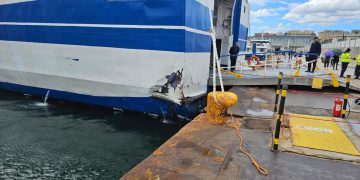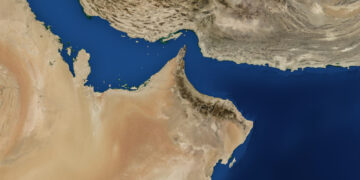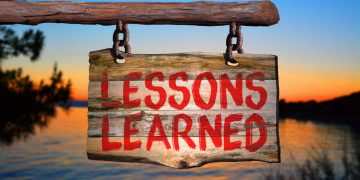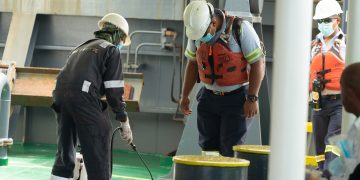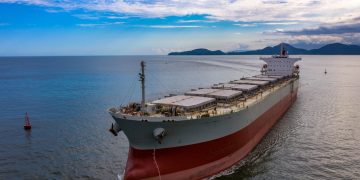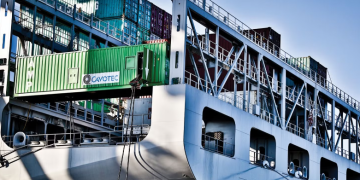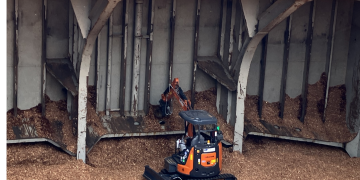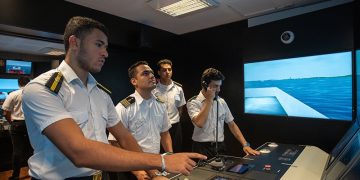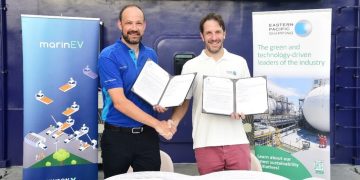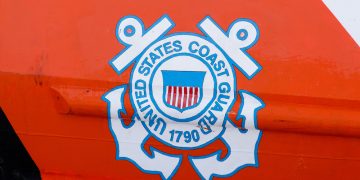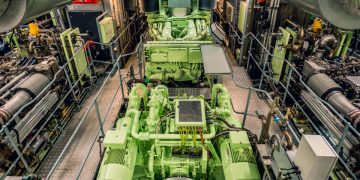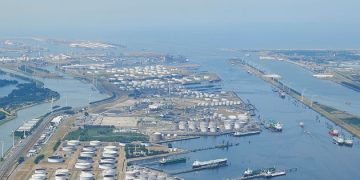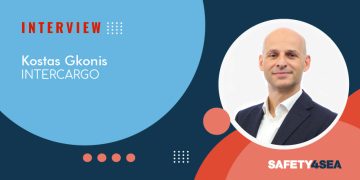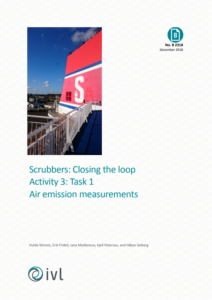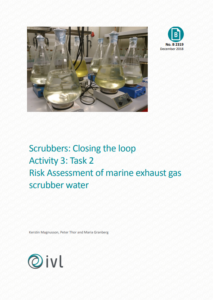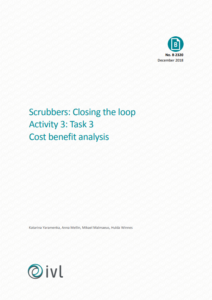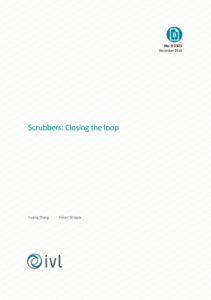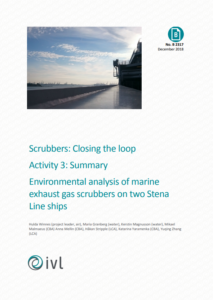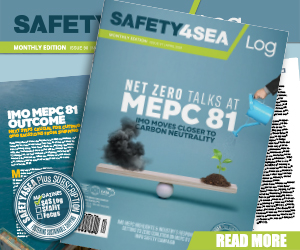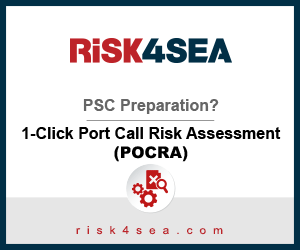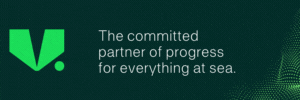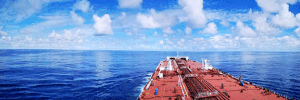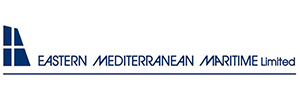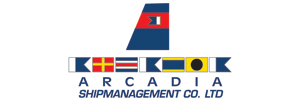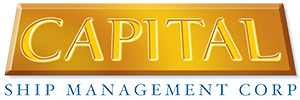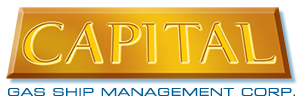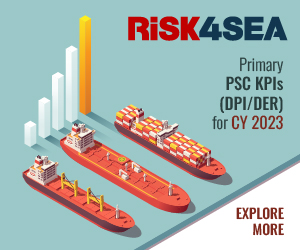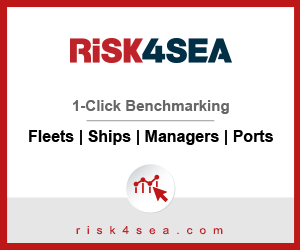A series of five reports analyzing scrubbers from various environmental and economic aspects have just been released by Swedish Environmental Reserach Institute IVL. The reports analyze Activity 3 in the CEF funded project ‘Scrubbers – Closing the loop’. Activity 3 is the Integrated Life Cycle Balance (ILCB) of the project, evaluating environmental aspects of the project from different perspectives.
The results of the reports are presented in four parts of the work regarding:
- Air emissions;
- Water emissions and toxicity tests;
- Cost benefit analysis;
- Life cycle assessment.
Air emissions
The main purpose of installing scrubbers on a ship is to reduce emission of sulphur dioxide to levels equal to emission levels from combustion of a fuel with 0.1% sulphur. The closed loop scrubber system on Stena Britannica was shown to accomplish and outperform the emission limit. SO2 emissions are reduced significantly with the scrubber on board Stena Britannica.
[smlsubform prepend=”GET THE SAFETY4SEA IN YOUR INBOX!” showname=false emailtxt=”” emailholder=”Enter your email address” showsubmit=true submittxt=”Submit” jsthanks=false thankyou=”Thank you for subscribing to our mailing list”]
The emission factor for SO2 downstream the scrubber was 83% less than at combustion of low sulphur oil at 75% engine load. The emission factor is specific for the engine and represents mass of emission per unit of work produced by the engine, often expressed as g/kWh.
In addition, the emissions of total hydrocarbons were lower downstream a scrubber in comparison to emissions from LSFO combustion, around 40% lower at 75% engine load. No significant differences in specific emissions of CO2 and NOX could be concluded from the measurements, while the specific emission of CO was around 50% higher downstream the scrubber than at LSFO combustion.
The specific emissions of PM were higher downstream the scrubber compared to a situation with LSFO combustion, 0.27 g/kWh compared to 0.12 g/kWh. Moreover, emission factors of PAHs, elemental carbon and black carbon, and sulphur in particles were higher downstream the scrubber compared to the LSFO, while results are not as clear on emissions of total organic carbon. The metal emissions are lower downstream the scrubber compared to LSFO combustion at 75% engine load.
Tests at lower engine loads in large indicate a similar situation although the SO2 removal seems more efficient at lower engine loads, and the differences in PM emissions are less visible. Metal emissions at low engine loads are higher downstream the scrubber compared to at combustion of LSFO, which is the opposite of the situation at 75% engine load.
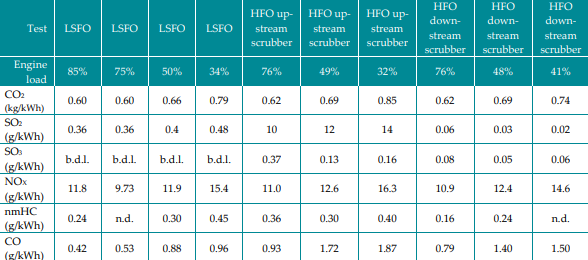
Furthermore, volatile particles were efficiently removed in the scrubber. Volatile particles can be distinguished from solid particles after heating the sample gas, which makes them evaporate. Solid particles are also exemplified by contents of black carbon and elemental carbon. Organic carbon content of particles is more or less volatile. Particle numbers are equally efficiently reduced over the scrubber at different engine loads.
As for organic carbon, it is removed more efficiently at lower engine loads than at higher. Solid particulate matter seems to be more efficiently removed in the scrubber at low and medium engine loads than at high engine loads. While the trend is that there is a decrease of particulate matter in the scrubber, metal contents in the analyses indicated to increase in the scrubber process. The reason for this is unclear.
Uncertainties of the results include the emission measurement methods used that are not as tested on cold exhaust gases. The gases downstream the scrubber is about 20° C. No applicable standard for such measurements exists.
Water emissions and toxicity tests
Various samples on process and effluent waters were taken and analysed. The bleed off treatment unit (BOTU) efficiently removes most metals. Exceptions are copper (Cu) and mercury (Hg) that increase in concentration after the scrubber. Total hydrocarbons are also efficiently removed.
The groups of the lightest hydrocarbon molecules tested are least efficiently removed. The straight chain hydrocarbons with 12 carbon atoms or less even took place in higher concentration after the BOTU than before. The reason for this might be the result of long chained hydrocarbons being degraded to shorter chains during the water treatment. It may also be related to the addition of flocculant and coagulant chemicals during the water treatment.
Impacts from the exposure of marine organisms to scrubber effluent water were seen in all test setups. The least concentration of scrubber water found to have a toxic effect varied between the tests. The most sensitive indicator was mortality rate in juvenile stages of copepods. Toxic effects on copepods were not because of the water sulphur content but due to other components in the effluent.
In all tests the lowest tested concentration caused toxic effects on the juvenile copepods, which means that even lower concentrations may have an environmental risk. The effects on blue mussels were less clear than for the copepods. Only one endpoint regarding the ability for mussels to attach to the ground showed an important effect from exposure to the scrubber effluent. This effect was detected at a washwater concentration of 1.25% and only in exposure of water from the closed loop system on Stena Transporter.
The effluent scrubber water was found more toxic to marine organisms than what could be predicted from available data on toxicity of the individual chemical substances it included. The concentration of scrubber water in the mixing zone behind a ship is estimated to be at a level where there is a risk for harmful effects on planktonic organisms.
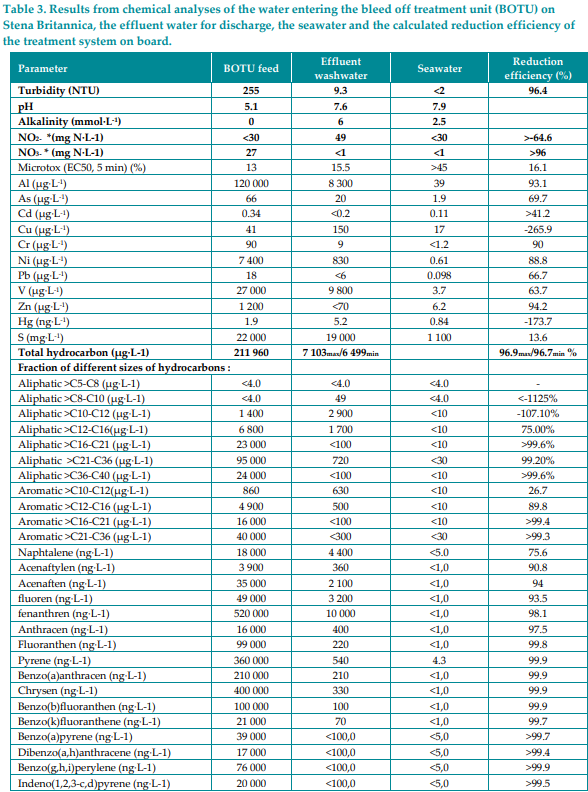
On the other hand, the risk assessment based on eco-toxicity of the total discharge shows something else.
The combined effects of the substances in the effluent, points to that the marine environment in the vicinity of shipping lanes or busy areas such as ports and river mouths, may be altered due to discharged scrubber washwater in the lane
Concentrations surpass a calculated threshold levels in the mixing zone, in which exceedance is acceptable according to the Water Framework Directive. Levels of concern are not likely outside the mixing zone from a single passing ship, but can be expected if a few tens of ships are in the same area within a time frame of a few hours.
Scrubber effluent from 1 ship with open system is over the calculated threshold concentration by 6.3 times and closed system effluents exceed the level by 1.9 – 3.8 times. Further modelling of the dilution process in sea water is required for a more detailed analysis.
Cost benefit analysis
The overall annual shipping costs could be higher using low sulphur fuel oil than using a scrubber together with HFO. The total annual shipping costs for Stena Hollandica and Stena Britannica are expected to be 0.9 million € less per ship if using a closed loop system compared to running the ships on LSFO. The corresponding reduced cost in an assumed scenario with an open loop scrubber is 1.4 million €. Operation and management costs are higher in the case of the closed loop scrubber, mainly because of costs of chemicals such as sodium hydroxide (NaOH) needed for the abatement process.
There is also a difference in the external costs caused by the different options. With a closed loop scrubber the external costs attributable to environmental effects from Stena Hollandica and Stena Britannica are estimated to be about 0.6 million € higher than if low sulphur oil is used per vessel and year. In an assumed setting with an open loop scrubber on the ships the external costs are 0.5 million € higher per year than if the ship would use low sulphur fuel oil.
The results show that use of scrubbers on these particular two vessels increase health and environmental costs compared to the case when vessels use LSFO, despite a more efficient control of SO2 emissions. The major contributing factor to external costs for ships with and without scrubbers relate to emissions of NOX and CO2. As a scrubber has a minor effect on these emissions the fuel consumption is of major importance when comparing different alternatives.
High fuel consumption will cause higher emissions than lower fuel consumption in the same engine. The fuel consumption will be different if the ship uses low sulphur fuel oil or heavy fuel oil with a closed or an open loop scrubber. The most important factors are the energy needed to run pumps and cooling water in the scrubber scenarios and the differences in energy content between the fuels. The closed loop scrubber studied in this report needs more energy than the open loop scrubber, thus being less attractive option from an external cost perspective.
In an analysis of external costs of environmental effects in water, these are valuated as less significant than those caused by emissions to air. The reason is expected to be partly because of the fact that methods for economic valuation of effects from emissions to water are not fully developed and the results are not comprehensive.
In a comparison between the emissions from the closed loop system and the open system, the open loop discharge causes twice the costs of the closed loop due to eco-toxic effects. Eutrophication effects are higher from the closed loop discharge leading to total differences between the systems to be only marginally higher in the open loop scenario than in the closed loop scenario.
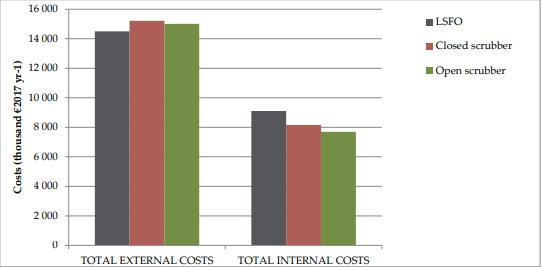
The open scrubber scenario is associated with lower shipping costs and lower external costs than the closed scrubber scenario.
Life Cycle Assessment
The LCA is mainly made to compare three different options of compliance with the sulphur regulations in the SECA. Different environmental impacts from operating a ship on heavy fuel oil, along with a scrubber system, are compared with those from operations on low sulphur fuel oil.
Two alternative production ways for LSFO were investigated. Toxic effects from the discharge of effluent water to the sea are not included in the modelling. The quantitative analysis is mainly a comparison of effects regarding the energy need and the effects of removing sulphur in a refinery compared to removal in the exhaust gases on the ship.
The operational phase dominates the impact analyses. This is because the combustion of fuel used to run the ship. In the operational phase, the energy use in both scrubber alternatives, closed- and open loop, is higher than in the low sulphur fuel oil alternative. This is relative to the previously mentioned extra fuel needed to run pumps for the process water and cooling water for the scrubbers.
Furthermore, the energy need is higher in the closed loop system than in the open loop system. From a system perspective though, the energy requirements in the refinery to produce a hydrocracked low sulphur fuel oil from heavy fuel oil still contributes a great part of energy input to the system. This leads the alternative with LSFO from hydrocracking to need more energy than the other alternatives. As a result, this alternative has the highest global warming potential.
The internal order of the compared systems’ performances in the other impact categories varies. The differences between the alternatives are small in comparison to total impacts in all studied categories. The alternative in which LSFO is produced similar to marine gasoil does well except in depleting fossil energy.
Finally, assumptions made in a life cycle assessments study significantly affects the results, while there are uncertainties in many of the input data.
You may see a summary of the reports in the PDF below




